艺术类专业英语课件.
- 格式:ppt
- 大小:2.17 MB
- 文档页数:36
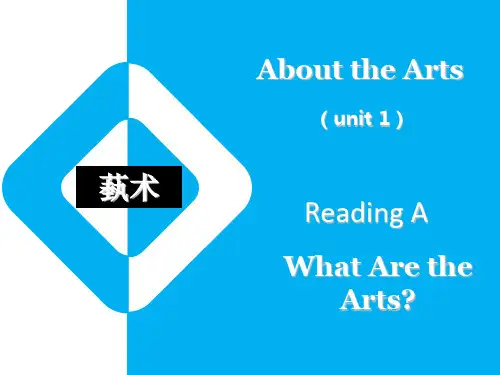
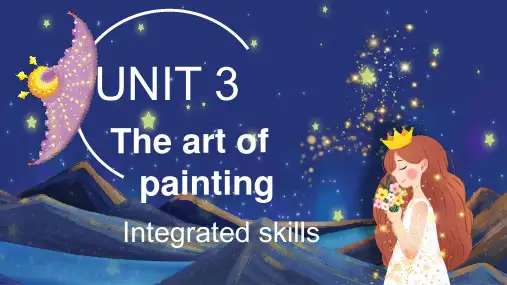
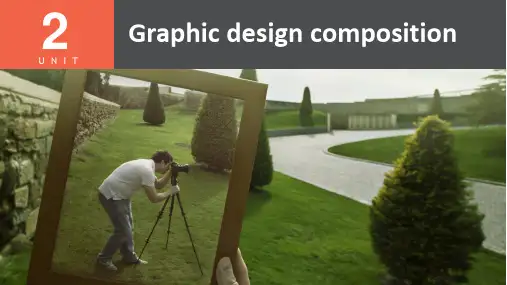
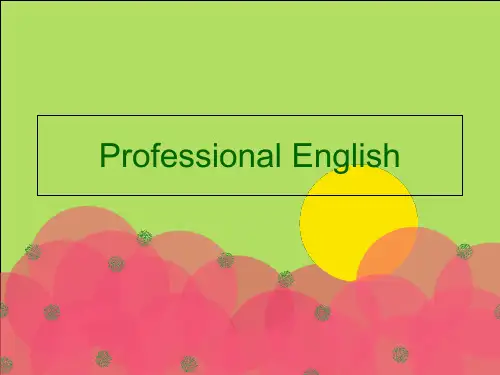


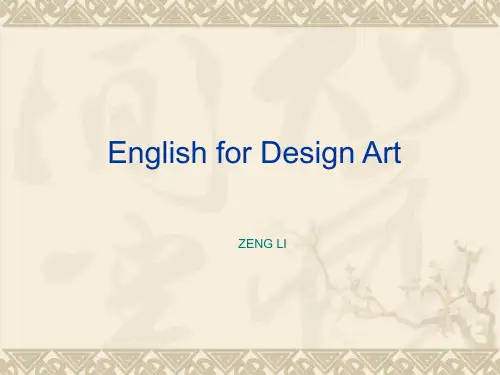
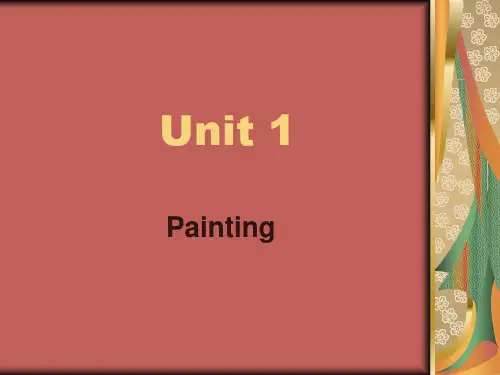
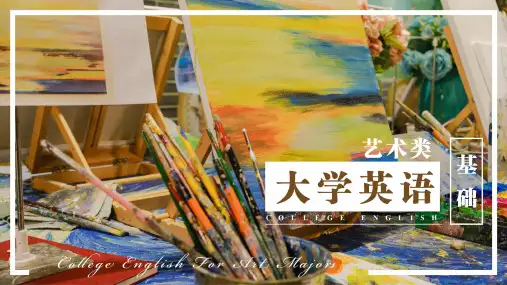
Unit 7PhotographersA photographer is a person who takes photographs using a camera. A professional photographeruses photography to earn money whilst amateur photographers take photographs for pleasure and torecord an event, emotion, a place, or a person.A professional photographer may be an employee, for example, of a newspaper, or may contractto cover a particular event such as a wedding or graduation, or to illustrate an advertisement. Others,including paparazzi and fine art photographers, are freelancers, first making a picture and then offeringit for sale or display. Some workers, such as policemen, estate agents, journalists and scientists, makephotographs as part of other work. Photographers who produce moving rather than still pictures areoften called cinematographers, videographers or camera operators, depending on the commercialcontext.Photographers are also categorized based on the subjects they photograph. Some photographersexplore subjects typical of paintings such as landscape, still life, and portraiture. Other photographersspecialize in subjects unique to photography, including street photography, documentary photography,fashion photography, wedding photography, war photography, photojournalism, and commercialphotography.B a c k g r o u n d I n f o r m a t i o n1. Write the right names of the famous photographers in the box under the following photos.KeysHou Dengke Henri Cartier Bresson Vivian Maier Lang Jingshan Edward Steichen Wu Yinxian2. Pair work. Discuss with a partner the following questions. The expressions in the box below may help you.(1) Who is your favorite photographer?(2) Can you name one of his / her master works?(3) Why do you like his / her works?3. Do you like taking photos? What kinds of photos do you like most? And why?In this part, first you are going to learn how to offer, accept and reject suggestions. Then you are going to practise listening for some key information about Kevin Carter and William Klein.1. John and Mary are talking about how to spend their weekend. Listen to the model dialogue and underline the expressions of offering and accepting suggestions.Culture TipsJohn: Hi, Mary, would you like to do something with me this weekend?Mary: Sure. What shall we do?John: I don’t know. Do you have any ideas?Mary: Well, why don’t we see the photo exhibition at the gallery?John: It does sound good to me. What kind of photos can we see?Mary: Famous photos of the Second World War.John: That’s great. How about starting early tomorrow?Mary: That’s a great idea. Let’s meet at the school gate at 8:30 tomorrow morning.John: Ok. See you tomorrow.Mary: See you.KeysSimple ways to say “no”l People always have difficulty saying “no”, because they don’t want to hurt other person’s feelings.l Here are 7 simple ways to say no:(1) I can’t commit to this as I have other priorities at the moment.(2) Now’s not a good time as I’m in the middle of something. How about reconnecting next time?(3) I’d love to do this, but...(4) Let me think about it first and I’ll get back to you.(5) This doesn’t meet my needs now but I’ll be sure to keep you in mind.(6) I’m not the best person to help on this. Why don’t you try...?(7) No, I can’t.Cu l t u r e T i p s2. Practise the dialogue above with your partner, using the expressions in the box below.3. John and Mary met another day after they went to the photo exhibition. Listen to the dialogue and fill in the blanks.Keys John: Hi, Mary, another weekend! What’s your plan?Mary: Mm, I don’t know. (1) ?John: (2) to see a film?Mary: What film shall we see?John: Let’s see Lethal Weapon.Mary: (3) . I don’t like violent films. How about going to Mr. Bean’s Holiday? I heard it’s quite a funny film.John: Ok. (4) go in the morning?Mary: Oh, (5) go in the afternoon? Then we can sleep late in the morning. John: (6) . Let’s meet at 2:30 p.m. at the school gate.Mary: Good. See you then.John: See you.Do you have any ideasDon’t you think it might be a good ideaI’d rather notShall wewhy don’t weAll right4. Listen again and decide whether the following statements are true (T) or false (F).(1) Mary suggests going to see a film. (2) John wants to see Lethal Weapon . (3) Mary likes violent movies.(4) Mary and John will go to see the movie in the morning.Expressions &PatternsKeysF FFT5. Make short dialogues according to the following situation and try to use the above mentioned seven ways to say no from the Culture Tips.You invite your friend to a photography show, but he / she has something urgentto do, so he / she rejects your invitation.Before You Listen1. Do you know how to read the following proper names and words? Try to read them aloud.Proper NamesKevin Carter Johannesburg Sunday Express Johannesburg Star Sudan the Pulitzer Nissan William Klein MilanVogue the Museum of Modern Art in New Yorkthe Pompidou Centre in Paris the Victoria and Albert Museum in LondonWordsapartheid brutality gun-toting marijuana vulture icon splash carbon monoxide exhibition accomplish media recognition lensman TV commercials2. What do you know about the two photographers Kevin Carter and William Klein? Share your knowledge with your partner.While You Listen1. Listen and answer the questions about Carter and Klein. Check(√) the correct box.KeysWho…Carter Klein(1) was born in New York?□□(2) was once a sports photographer?□□(3) worked for the Johannesburg Star?□□(4) had his first exhibition at the age of 23?□□(5) took drugs?□□(6) is accomplished in three different media?□□(7) has produced more than 250 TV commercials?□□(8) died at the age of 33?□□✓✓✓✓✓✓✓✓While You Listen2. Listen again and fill in the following table about the achievements of Carter and Klein. KeysAchievementsLuciano Pavarotti(1) His photo of a tiny girl became.(2) He won the Prize.Anna Moffo(1) He published a book of photos.(2) He worked for , as a revolutionary and talented fashion lensman.(3) His work is owned by the Museum of Modern Art in New York, .an icon of Africa’s anguishPulitzerabstractVoguethe Pompidou Centre in ParisAfter You Listen1. Watch a video about a photographer who talks about his photos, trying to understand why these photos are taken. After You Listen(1) His / Her personal experience (2) His / Her achievements (3) His / Her master works(4) His / Her influence, etc.2. In groups, prepare a five-minute speech about one famous photographer in China. You should include the following information in your talk. In this part, you are going to read two passages about the photographers Henri Cartier-Bresson and Yousuf Karsh respectively. After reading, you are going to practise your comprehension and learn to use some English words and phrases.Warm-upCommunicate with other students about the questions.(1) Have you ever seen the following photos? Who are the people in the photos?(2) Do you know who took these photos?(3) Do you like them? Why or why not?Consider the titles of the reading passages below. Write down three questions that you mightexpect to be answered.Life of Henri Cartier-Bresson 1Henri Cartier-Bresson was the father of modern photojournalism. He was an early adopter of the35mm format, and a master of candid photography. He helped develop the “street photography” or“real life reportage” style that has influenced generations of photographers who followed.• 他是最早使用35毫米小型相机的摄影师之一,也是“堪的派”摄影大师。


Unit 5Fashion:A Charming SymbolHere are works of a famous Chinese fashion designer. Discuss the works and tell each other who designed them.Lead-inLead-inTell each other how you feel about the fashion design, using the words and expressions in thebox below when necessary.KeysModule 1 Learn to TalkDavid: Ken, Ken! Over here!Ken: (Comes over ) David! Long time no see! What have you been up to lately?David: No good, I can assure you. And you?Ken: Much the same, except I do have some big news.David: Come on, the suspense is killing me.Ken: I’m getting married!David: NO! You said you’d never get married. I can’t believe it.Ken: That was then and this is now. You’ve got to meet Andrea, she is great.David: So come on. This is all news to me. I didn’t even know you were dating.Ken: We weren’t. We’ve just been dating for two weeks now.David: ...and you’re getting married?Ken: I know, I know. I can’t help it. I’m just completely head over heels in love with Andrea.David: Well, congratulations my friend! That is fantastic! This calls for a beer!Ken: Thanks, David, I’m glad to hear you feel that way. I thought you might be surprised.Ken shares his good news with David. Listen to the model dialogue and underline the expressions of congratulations.KeysTipsRole play the dialogue above with your partner, using the expressions in the box below.Listen to the speaker describe her favourite fashion designers. Match the name of the designer with the correct nationality.keysBritish AmericanItalianListen again and decide whether the following statements are true (T) or false (F).keys(1) The speaker has three favourite fashion designers.(2) Anna Sui’s designs are closely associated withpunks.(3) Elegance is the main aspect of Vivian Westwood’sstyle.(4) Gianni Versace died in 1997.(5) Elton John has long been a wearer of GianniVersace’s designs.(6) Anna Sui’s brand retails only in America.TFFTTFUsefulExpressionsCongratulations My Friend! U seful ExpressionsCongratulations on your success in the examinationLet me congratulate you!Congratulations on your new job:You’re so lucky.Best of luck!Congratulations on your promotion:Good luck.Best of luck.Congratulations on your opening your new store/winning the match:That’s wonderful!That’s great!I’m happy to hear that.I’m glad to hear that.Congratulations on your marriage and best wishes to you both: Ladies and gentlemen, will you please stand up and drink a toast to the health, wealth and happiness of the bride and the groom?Go around the class, and try to congratulate your classmates with the help of the expressions.The following sample may be useful for you.A: Nice to meet you!B: …, I hear your team won the match.A: Yes, all of us tried our best. B: Congratulations!A: Thanks a lot.Stories of SupermodelsStories of Supermodels1. Do you know how to read the following proper names, words and phrases? Try to read them aloud.2. What do you know about the two supermodels Kate Moss and Cindy Crawford? Share your knowledge with your partner.Who…Kate Moss Cindy Crawford was born in America.became “anti-supermodel” in 1990s.dropped out in order to pursue a full-time modelling career.got criticism from then-President of the United States Bill Clinton.has been on the cover of more than 600 magazines.was added to PETA’s “Worst-Dressed Celebrities of 2008” because of her frequent use of fur.won an academic scholarship to study chemical engineering.is known for her trademark mole just above her lip.Stories of Supermodels Keys 1. Listen and tick (√) the correct box according to the information you’ve heard. Family InfluenceKate Moss Kate Moss’s parents divorced when she was __________.Moss was not particularly noted for her academic success, but she did excel at _______.In July 2007, after earning an estimated total of $9 million in the past 12 months, Forbesmagazine named her ___________on the list of the World’s 15 Top-earning Models List.Cindy Crawford She was ranked number __________ on Playboy ’s list of the 100 Sexiest Stars of the 20th century.Stories of Supermodels Keys2. Listen again and fill in the blanks with the missing words.13sports second5Stories of SupermodelsDiscuss the following questions in groups.(1) Do you want to be a supermodel, why or why not?(2) What do you think are the requirements to be a supermodel?In this part you are going to read two passages about the works of two fashion designers Christian Dior and Coco Chanel respectively. After reading you are going to practise your comprehension and learn to use some English words and phrases. Which fashion designer is your favourite?What kind of clothing style do you prefer?What elements influence fashion trends?W a r m -u pNew Look:The Turning Point in Fashion History1 A fter World War II, the roles of women had changed. During the war, women had been employed in factories and farms to take over for the men who had left to join the war. Now that the men were home, women were returning to the homes in roles as wives and mothers. On February 12, 1947, Christian Dior held his first couture show. He showed a collection of luxurious clothes:soft shoulders, narrow waists, and full flowing skirts. Fashion magazines in Europe and the US nicknamed the Christian Dior collection the “New Look”. This “New Look” was exactly what people were looking for after the war and Christian Dior’s new designs fit the positions of these women perfectly. After his runway show, everyone wanted a piece of the collection.1• 战争中,男人们离开家去前方参战,女人就接替了男人到工厂和农场里面工作。
目录CONTENTS 艺术类提Unit 3 The Emotional Power of FilmLead-inModule 1 Learn to TalkModule 2 Learn to ReadModule 3 Scenario LinkModule 4 WritingModule 5 Culture SalonOf all the products of popular culture, none is more sharply impressed in our collective imagination than the movies. Most Americans instantly recognize images produced by the movies. Even those who have never seen Citizen Kane(《公民凯恩》)or Casablanca respond instantly to the advertisements, parodies(翻版作品), and TV skits(小喜剧)that use these films’ dialogue, images, and characters.Movies are key cultural objects that offer a window into American cultural and social history. A mixture of art, business, and popular entertainment, the movies provide a host of insights into Americans’ shifting ideals, fantasies, and thoughts. Like any cultural object, the movies can be approached in a variety of ways. Cultural historians have treated movies as sociological documents that record the look and mood of particular historical settings; as ideological constructs that advance particular political or moral values or myths; as psychological texts that speak to individual and social anxieties and tensions; and as visual texts that offer complex levels of meaning and seeing.As Andrew Bergman has shown, the fantasy world of the movies played a critical social and psychological function for Depression era Americans: In the face of economic disaster, it kept alive a belief in the possibility of individual success, portrayed a government capable of protecting its citizens from external threats, and sustained a vision of America as a classless society. Again and again, Hollywood repeated the same formulas: A poor boy from the slums uses crime as a ladder of success. A back row chorus girl rises to the lead through luck and courage. A poor boy and a rich girl meet, go through crazy adventures, and fall in love. Out of these simple plots, Hollywood restored faith in individual initiative, in the effectiveness of government, and in a common American identity transcending social class.Discuss the following questions after watching some film clips.(1) Which clips impressed you most? Describe them to your partner.(2) Talk about what you feel when watching these clips.(3) What kind of emotions do you think are expressed in these clips?In this part, first you are going to watch a movie clip of Jane Eyre, and enjoy the famous dialogue between Jane and Rochester. Then you are going to listen to two short passages about films’ great charm.1. Watch the movie clip of Jane Eyre, paying attention to how Jane Eyre and Edward Rochester express affection for each other.Jane Eyre: Why do you confide in me like this? What are you and she to me? Do you think because I am poor and plain, I have no feelings? I promise you, if God had gifted me with wealth and beauty, I should make it as hard for you to leave me now as it is for me to leave you. But he did not. Yet my spirit can address yours, as if both had passed through the grave and stood before heaven equal.Edward Rochester: Jane.Jane Eyre: Let me go, sir.Edward Rochester: I love you. I love you!Jane Eyre: Please, don’t make me foolish.Edward Rochester: Foolish? I need you! What’s Blanch to me? I know what I am to her. Money to manure her father’s land with. Marry me, Jane. Say you’ll marry me.Jane Eyre: You mean it?Edward Rochester: You torture me with your doubts. Say yes, say yes (He takes her into his arm and kisses her.) God forgive me. And let no men meddle with me. She is mine. Mine.l confide in ● What are you and she to me?l gift… with ● make sb. foolishl You mean it? ● torture withL a n g u a g e T i ps 2. Listen to the dialogue again, repeat it sentence by sentence.3. Work in pairs to make up a love story, using the following expressions when necessary.1. Do you know how to read the following proper names and words? Try to read them aloud.2. Do you think films reflect the real world or help people realize their dreams? Why or why not?3. Do you like watching horror movies? Why or why not?KeyRealism and Formalism1. Listen to the short passage “Realism and Formalism”, and choose the best answer to each question below.(1) Why does the speaker study film? A. His parents made him study film.B. He has to study film to graduate from the university.C. He likes art.D. Not mentioned.C(2) What is realism in the film according to the speaker?A. The film is catching people’s expectation of real life.B. The film imitates life.C. The film is fighting against the real world.D. The film rearranges the world.(3) What is formalism in the film according to the speaker? A. The film uses technology to change reality and hold the audience.B. The director rearranges time and space to reflect the real world.C. The film appears more artful than before.D. The director pays more attention to the format of films.KeyB A2. Listen again and fill in the blanks with the exact words you hear.(1)I think realism and formalism are hard to define. They seem to be the ends of a structure. They aretwo different ways to films.(2)In realism it seems that the film is an aspect of real life. I’m sure you’ve all heard that ,something about the film isthe actual world. Maybe even more than reflecting, it’s the world or being the world.(3)Now let’s talk about. To me, that means we’re using the power of film, we’re using technology to real life.Keypretty opposite analyze capturing art imitates life reflecting representing formalism extendKeyWhy Do People Like Horror Movies?1.Listen to the passage and decide whether the following statements are True (T) or False (F).(1) Watching horror movies is a terrible experience.(2) The fear of watching horror movies can be controlled. (3) Horror movies also pose no real threat in people’s daily lives.(4) Horror movies make the audience experience only positive emotions.(5) As a cultural phenomenon, horror movies won’t disappear.F F TT TKey2. Listen again and discuss the following questions with your partner.(1)What’s the difference between watching a horror movie and experiencing real horror? The fear of watching horror movies can be controlled because audiences actually know they are safe. Real horror, however, is quite different. Audiences know they are in danger, the fear can’t be controlled.(2) What kind of excitement can the audience feel from watching horror movies?The enjoyment of horror movies is similar to riding roller coasters. The excitement of the unknown raises heart rate, and since the “horrors” pose no real threat, they can be managed, laughed about and enjoyed.(3) What is the magic charm of horror movies?The magic charm of horror movies is the feeling of relief when the movies are over.(4) What emotions can audiences experience simultaneously when watching horror movies?They experience both positive and negative emotions simultaneously.1. Group discussionWhat do you think is the most important function of films? Some think films reflect the real world, while others emphasize how films help the audience realize their dreams. Talk to your partner about your opinions.T i p sl reflect the real world ● reflect the changing politics and economyl cultural transmission ● question society’s valuel improve society ● help the audience realize their dreamsl entertainment industry ● relax and enjoy oneselfl emotional needs2. Pair workSophia is a girl of 17. She hates horror movies. She wonders why people desire to see horror movies at the cinema when there are enough horrible things in the real world. Think about what you want to say. You can share with her your feelings or experience of watching honor movies.T i p sl enjoy the adrenalin (肾上腺素) rush they createl emotional roller coaster they developl haunting visualsl each emotion is part of an average lifel each genre of movie just plays on certain emotionsl be similar to comedy or tragedyIn this part you are going to read two passages entitled “Hollywood and China see a future for co-productions” and “True Love”. After reading you are going to do some follow-up exercises to improve your reading skills and enlarge your vocabulary.Discuss the following questions with your partner.(1) What do you know about China-U.S. film co-productions?(2) What influences the success of film co-productions?(3) What is the difference between China and the United States in movie-going experience?Hollywood and China See a Future for Co-productions1. In response to the agreement between China and the United States toencourage cross-cultural, people-to-people exchanges, U.S. and Chinesefilmmakers are gearing up to jump into the fray.1中美电影节由美国鹰龙传媒公司主办,联合了美国多家媒体娱乐机构参与,并且获得了中国国家广电总局和美国电影协会的支持。